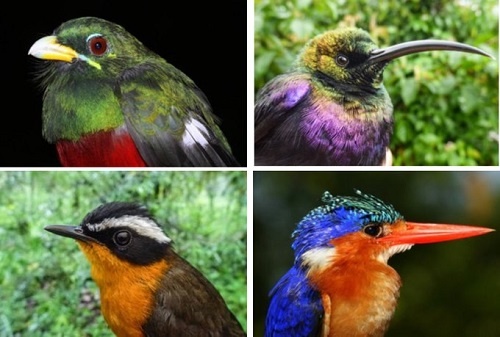
A study by the University of Utah researchers establishes baseline observations for tropical birds in East Africa, filling in an important data gap for monitoring biodiversity and tropical ecosystem health in a warming world.
By Paul Gabrielsen
SALT LAKE CITY, UT (@theU) – One of the projected effects of a warming climate for species living on mountain slopes is moving their distributions upslope as their habits shift upwards. Eventually, since mountains have a limit to their elevation, a species may have no more habitat to move up to and therefore go extinct. Tracking how and where this is happening is tough, though, if you don’t have a good idea of where the species are now. That’s the situation in places such as Africa, which have tremendous biodiversity but spotty ecological baseline data.
So University of Utah (Salt Lake City, Utah) researchers set out to assess the status of bird species in Ethiopia’s Bale Mountains through six years’ worth of bird banding efforts at five sites. The sites spanned more than a mile of vertical elevation on the tropical mountain slopes. The highest species richness, they found, was near the lowest and intermediate elevation stations, and six species were found at elevations higher than they’d been seen before.
The study*, the authors write, establishes baseline observations for tropical birds in East Africa, filling in an important data gap for monitoring biodiversity and tropical ecosystem health in a warming world. The study is published in Ornithological Applications.
* Kyle D Kittelberger, Montague H C Neate-Clegg, Evan R Buechley, Çağan Hakkı Şekercioğlu, Community characteristics of forest understory birds along an elevational gradient in the Horn of Africa: A multi-year baseline, Ornithological Applications, 2021;, duab009, https://doi.org/10.1093/ornithapp/duab009
Source: @theU
